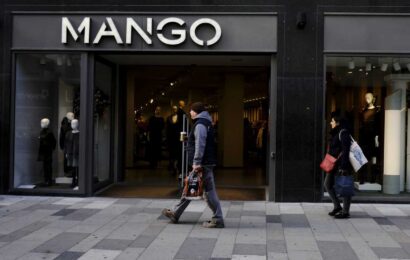SOLAR panels can save you hundreds of pounds on your energy bills and are well worth investing in if you've got the spare cash.
But you might be wondering how much they cost to install and whether they're actually worth it.
Rishi Sunak, then Chancellor, has previously said installing solar panels can save the average household £300 a year on its energy bills.
Meanwhile, the Energy Saving Trust has said solar panels will typically cut your electricity bill by 15-25%.
But the bill boosters can cost thousands of pounds to install which many find off-putting.
Here's everything you need to know.
Read more in Energy Bills
Exact date for next big change to energy prices – how much your bill could fall
Fury as British Gas profits soar by 900% as Brits struggle to pay energy bills
How much do solar panels cost?
Prices will vary depending on your installer and also based on how many solar panels you have.
But ongoing costs are low. A piece of tech in the panels called an inverter will need replacing around every 25 years and should set you back around £800.
Tashema Jackson, consumer champion at energyhelpline, previously told The Sun: “Solar panels can be a great way to save money on your energy bill while also reducing your home’s carbon footprint.
Most read in Money

I set up an inflatable pub in my garden during Covid — now it's a business

Shoppers' fury after Tesco suddenly pulls key product from shelves

Fury as British Gas profits soar by 900% as Brits struggle to pay energy bills

Another supermarket is selling a knock off Colin – and it's cheaper than Aldi's
"You can also make some money by selling any surplus electricity you generate back to your energy supplier.
"Where you live in the country does have an impact on the savings you are likely to make, so it’s worth doing a bit of research before committing to an installation."
How much energy do solar panels produce?
How much energy your solar panels produce depends on where you are in the country, which direction your roof faces – and, of course, the weather.
Solar panels, unsurprisingly, are reliant on sunshine to operate.
That means those living in the south of England may enjoy higher energy production than someone with solar panels in Scotland.
This also means your solar panels might not produce as much energy through the winter months.
Do I need planning permission for solar panels?
In most cases, you won't need planning permission to install solar panels mounted on a roof or wall of a private house.
This is because they normally fall under what is referred to as permitted development rights.
But, you may need planning permission if you breach certain conditions.
For example, if you breach the ridge line of your property or if the panels protrude more than 200mm from the surface of your roof.
Panels must also be fitted in a way that does not impact the surrounding area and external appearance of the home too much.
If you are installing ground mounted panels, you must meet other more specific regulations.
This includes the panels not being more than four metres tall, no less than five metres from any boundaries, no bigger than nine square metres big and not installed within the boundary of a listed building.
If you are installing solar panels in a conservation area, a ground mounted installation should not be installed between your property and a road, nor can they be visible from the road.
How many solar panels do I need?
Energyhelpline.com says 12 panels should provide enough electricity for a family of four.
You would need around 20 square metres of roof space for this amount.
Installation for this would cost roughly £6,000, it says.
Meanwhile, a larger family home might need around 16 panels, which costs up to £8,000.
Can I get free solar panels?
Unfortunately not. Homeowners used to be able to get a grant to pay for the installation of solar panels or an interest-free loan from the government, but these are no longer available.
The Feed-in Tariff (FIT) scheme was introduced by the government in April 2010 to increase take-up of renewable energy.
But the scheme closed in April 2019 and solar panel installations have since decreased.
Between April 2018 and March 2019, there were 32,370 installations in the 0-4kWh band (which is what the typical residential installation would be).
After the FIT scheme closed, installations dropped by 95%.
If you already get the FIT payments, you still get them even though the scheme has closed – it’s only ended for new applicants.
The payments are guaranteed to last at least 20 years from when you signed up – that’s why there was such a boom in installations just before the scheme closed.
Those signed up to FIT get one payment for every kWh of solar energy they generate, and another for any they sell back to the grid.
The rate ranges from 6.39p-13.88p per kWh and varies depending on the size of your installation.
Are solar panels cost effective?
The initial cost of installing solar panels can seem like a lot, but they can save you money in the long-term.
Of course, how much you save depends on many panels you have and how much electricity you use.
It also depends on where you live, as some areas will of course get more sunshine than others.
Energyhelpline estimates that a three-bedroom house in the South of England could expect to save around £400 a year if it had solar panels.
The same property in North Wales would save around £350, and in East Scotland just £300.
The Energy Saving Trust has a calculator that can help you work out how much you are likely to save.
It takes into account factors such as your postcode, direction of your roof, and how much of the day you are at home for.
Read More on The Sun
These 24 choking hazards in your home are as dangerous as button batteries
The 30p trick to make your loo smell amazing & perfect if you live with boys
We looked at home in the South East of England, with a west-facing garden, owned by someone who was mostly out until 4pm each day.
It estimated a potential energy bill saving of £104 with an additional SEG payment of £76 a year (more on which later).
Do you have a money problem that needs sorting? Get in touch by emailing [email protected].
You can also join our new Sun Money Facebook group to share stories and tips and engage with the consumer team and other group members.
Source: Read Full Article











